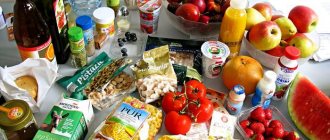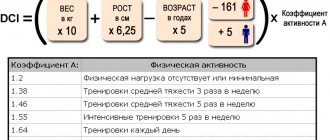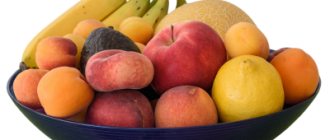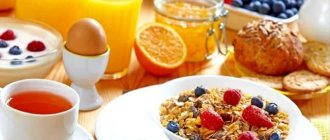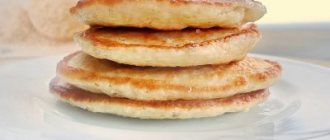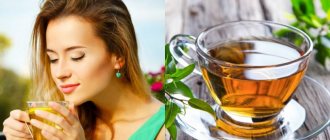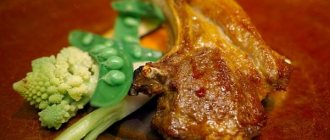Diet goal
Diet number five is aimed at reducing the load on the organs with high-calorie, but gentle nutrition. For what diseases is it applicable:
- chronic hepatitis;
- cirrhosis (when deficiency is not diagnosed);
- pancreatitis;
- gastroduodenitis;
- cholecystitis;
- cholelithiasis;
- JVP (biliary dyskinesia);
- rehabilitation after bladder resection.
Diet table number 5 has subtypes intended for different periods of illness. They exclude mechanical and chemical irritants from the diet and take into account associated pathological conditions.
Indications and contraindications
It is recommended to follow this diet for the following indications:
- Acute cholecystitis.
- Hepatitis.
- Gallbladder diseases.
- Cholelithiasis.
- Postoperative period.
Despite the effectiveness and benefits of this diet, there are contraindications:
- Stomach diseases.
- Intestinal obstruction.
- Inflammation of the pancreas.
- Pregnancy.
- Lactation period.
This diet should never be used for weight loss . It is designed specifically to treat the body. If you do not follow the menu or apply the diet if there are contraindications, you can cause harm to the body.
It manifests itself in the form of urticaria, nausea, dizziness, and diarrhea. Severe pain in the stomach and head may occur. If such phenomena occur, you should abandon the diet and also seek help from a doctor.
Diet
Dietary table number 5 involves consuming food in moderate portions, but every 2.5-3 hours. In the morning, immediately after waking up, it is recommended to drink a glass of boiled water.
Diet table No. 5 is recommended for nutrition both for people with liver and gallbladder diseases, and for general health.
For cholecystitis
It occurs most often as an indication for dietary nutrition. It occurs against the background of stagnation of bile and modification of its chemical composition. Therefore, it is important to consume foods that promote its outflow, especially bran. They are soaked in boiling water and eaten 1-1.5 tablespoons 3 times a day.
To lower cholesterol, you need to consume corn, olive, and flaxseed oil. They contain phospholipids, polyunsaturated amino acids and vitamin E.
Therapeutic nutrition in the first days of an exacerbation involves fasting. The patient can only drink. After 3 days, specialized nutrition (diet 5B) is recommended. It eliminates irritants and is indicated for bed rest, lasting four to five days. It involves reducing simple saccharides, proteins and lipids. You need to consume 1600 kcal and at least 2 liters of liquid per day.
Menu at table 5B:
- pureed food cooked in water;
- viscous soups;
- oatmeal and rice porridge;
- a little later, lean meat and steamed fish and cottage cheese are introduced;
- bread, crackers.
According to nutritionists, the diet also gives the effect of gentle, smooth weight loss, bringing sustainable results.
After 10 days, diet No. 5A is recommended.
If there is no exacerbation, moderate gentle nutrition and normalization of bile output are indicated. The diet provides for a reduction in the volume of fats (mainly refractory). To remove bile you need:
- salads with refined oil (alternate different ones);
- vegetables, fruits and berries;
- eggs (1/2-1 pcs./day);
- coarse fibers.
The diet can be maintained for 18-24 months.
What you can and cannot eat, cooking tips
This is the most universal diet that is suitable for diseases of the gastrointestinal tract at the subside stage. It is balanced, contains all the vitamins and microelements necessary for the body.
It is necessary to choose products that contain a lot of fiber and pectin (all types of fruits, except plums, cranberries, citrus fruits). You need to eat small portions up to six times a day.
When preparing food, food must be boiled, steamed, baked, sometimes stewed, but without adding oil.
Products containing cholesterol, purines, and essential oils are prohibited. The total calorie content per day is 2400-2600 kcal (proteins - 90 g, carbohydrates - 400 g, fats - 80 g).
List of allowed foods on the fifth table diet:
- Dried bread or crackers.
- Soups with vegetables and the addition of cereals (buckwheat, rice, barley) or noodles. Vegetables are not allowed to sauté.
- Meat and fish of low-fat varieties.
- Milk, low-fat cottage cheese.
- Steam omelettes.
- Boiled or stewed vegetables (pumpkin, eggplant, zucchini, cabbage, carrots). Raw vegetables allowed are cucumbers, tomatoes, and lettuce.
- Bananas, apples, dried fruits.
- Kissel, tea, juice, rosehip decoction.
- Marmalade, marshmallows, sugar, honey.
Prohibited products:
- Fried, spicy foods, smoked meats, canned food, sausage.
- Products that increase intestinal bloating (millet, legumes, white cabbage).
- Marinated, salted mushrooms and vegetables.
- Strong meat soups.
- Sour fruits and berries (plums, cranberries, oranges, tangerines).
- Cream, full-fat cottage cheese, sour cream.
- Cream cakes, ice cream, chocolate.
- Coffee, cocoa, carbonated drinks.
Daily ration energy value and chemical composition
Daily chemical composition:
- proteins - 80 g;
- lipids - 80-90 g;
- saccharides - 400 g;
- liquid - 1.5-2 l;
- salt - 10 g.
2400-2800 kcal can be supplied per day.
Beverages. Recipes for Diet 5 include:
- Tea with lemon;
- rosehip decoction;
- juices, if well tolerated;
- compotes;
- fruit drinks, jelly;
- chamomile decoction.
If you drink water, then it should be still.
Soups. Table 5 diet dishes include a variety of fruit soups with noodles, borscht and others. The most important thing is that they are cooked only from approved products and without heavy broth. Some foods may contain high amounts of magnesium. Soups for Diet 5 are the main dishes.
You should not eat all sauces: ketchup, mayonnaise, hot seasonings. Soda, alcohol, cocoa and black coffee are prohibited. Dishes should not be too hot or cold.
Porridge/cereals. Recipes for every day:
- slimy, crushed cereals;
- dishes with cereals - puddings, cottage cheese casseroles, noodles and others;
- pilaf;
- muesli;
- couscous, pliguri;
- millet;
- flax seeds.
It is better to eat porridge in the morning to get a boost of energy for the whole day.
Pasta. Used in the form of low-fat pasta or navy-style pasta.
Meat, fish, meat products. Everyday recipes include:
- dietary meat, horse meat;
- cabbage rolls;
- milk sausages (in exceptional cases);
- low-fat fish;
- seafood (rare);
- some salmon;
- homemade dumplings (rare).
Eat fish no more than 3 times a week, and seafood even less often.
Bread. Allowed:
- bran bread;
- rye;
- crackers;
- from wheat flour of grade I or II;
- biscuits;
- unhealthy baked goods;
- diet biscuit;
- breads.
You cannot cook soups with meat, fish and mushroom broths. Fatty meat and fish, offal, canned food, and lard are prohibited.
Baked goods cannot be fried.
Dairy and fermented milk products. Milk and sour milk (with low fat content):
- sour cream;
- mild cheese, feta;
- kefir, yogurt, yogurt, fermented baked milk, milk;
- cottage cheese.
All products are purchased natural.
Vegetables. Consume after heat treatment. If you eat them raw, then only a little.
Fruits, berries. You can eat them fresh, make salads, juices, mousses, etc. from them.
Eggs. You can use them to make a steam omelette or hard-boil them. Both chicken and quail eggs are allowed.
Oil. You can add up to 30 g of butter (per day). Purified vegetable quantities are allowed up to 10-15 ml. Olive is added in small dosage.
Snacks. Everyday recipes include:
- vegetable and fruit salads;
- low-fat soaked herring, etc., prepared from the list of permitted ones.
Everything is consumed in moderation.
Corn, pearl barley and wheat porridges are not recommended.
Sauces/condiments. You can improve the taste:
- sauces on dairy products and vegetables;
- fruit sauces;
- salt;
- dried herbs;
- soy sauce.
When preparing sauces, do not fry flour.
Sweet. From sweets the following are acceptable:
- berries, fruits, but not sour;
- dried fruits;
- jelly, mousse;
- marshmallows, but not much;
- marmalade;
- jam, honey, sugar (a little);
- paste;
- vareniki;
- gingerbread;
- Turkish delight and nougat without prohibited ingredients;
- caramel without ingredients included in the prohibited list;
- biscuit.
Any sweets are acceptable in small portions.
Chocolate and ice cream will have to be avoided, as well as sour fruits such as cranberries or citrus fruits.
Breakfasts and desserts
Lazy dumplings
A very easy to prepare dietary dish that can be offered not only to adults, but also to children.
Products needed for making dumplings: fresh cottage cheese (half a kilo), sugar (2 tablespoons), one raw egg, flour (3/4 cup), salt.
Cottage cheese is mixed with egg, sugar and a pinch of salt. Then add a little flour to the resulting mass. When the dough acquires a soft but elastic consistency, it can be considered ready. It should be a little sticky and wet. Before you start making dumplings, you need to wet your hands with water, this will make it easier to work with the dough. A long sausage is formed from the resulting mass, which is cut into fragments of the same size. The dumplings can be given any shape. Place the finished dumplings in boiling water and cook for no longer than 3 minutes. When all the dumplings are on the surface, you can turn off the heat.
Dumplings are served well with sour cream. This delicious breakfast can be prepared for future use by placing some of the dumplings in the freezer.
Rice-curd casserole
To prepare a casserole, which can be used as a breakfast and for dessert, you will need the following products: rice (250 g), cottage cheese (200 g), 3 apples and 3 chicken eggs, some raisins, 2 glasses of milk, a tablespoon of sour cream, 2 tablespoons spoons of sugar.
A glass of milk is mixed with a glass of water and rice is boiled in this mixture. The cottage cheese is carefully ground through a sieve, and the eggs are beaten with sugar. Apples without peel and seeds are cut into cubes. Cool the rice, add cottage cheese, raisins, apples and an egg-sugar mixture. All products are placed in a heat-resistant dish and placed in the oven. Top the casserole with a mixture of egg and sour cream. The dessert should be kept in the oven for a quarter of an hour at a temperature of 200 °C.
Steamed omelette
Steam omelet is an excellent option for breakfast, which fits into the menu of table No. 5. In this case, the yolk may not participate in the preparation of the dish (provided that the patient has recently undergone surgery and is in the recovery stage). In this case, the yolk is separated from the white. Beat the egg white, mix it with low-fat milk, salt it and pour it into the bowl of a double boiler. After 20 minutes the omelette will be ready.
To make the omelette taste brighter, you can add a pinch of nutmeg to it. As for the yolk, when the process of exacerbation of the disease has passed, it can be added to the dish.
Milk soup with potato dumplings
To prepare the dish you will need 800 ml of milk, 4 potatoes, 2 tablespoons of starch, salt and fresh carrot juice.
The potatoes must first be peeled and grated on a fine grater. After the juice has separated, the potatoes are gently squeezed out and the starch is combined with the potato mass. Then small meatballs are prepared from it, which are boiled in boiling milk until they are completely cooked. At the end of cooking, add carrot juice to the soup, add salt, boil for another minute and turn off.
Oat cookies
To prepare cookies you will need oatmeal, two eggs, sour cream (300 g), sugar (1 cup), butter (100 g).
The flakes will need to be thoroughly dried in the oven, and then ground to a powder. Then sour cream, eggs, butter and sugar are added to the cereal. Having kneaded the dough from these ingredients, it is rolled out, given the desired shape and baked in the oven at 180 degrees for a quarter of an hour.
Diet menu No. 5 for the week and diet
Here is a sample menu for the week.
Monday. Breakfast:
- omelette;
- oatmeal;
- tea.
Snack:
- baked apple;
- juice.
Dinner:
- cabbage soup;
- stewed zucchini;
- chicken and carrot puree;
- raisin compote.
The diet creates favorable conditions for the recovery of the body and will help avoid exacerbations of diseases.
Afternoon snack:
- jelly;
- biscuit.
Dinner:
- fish fillet;
- cottage cheese;
- chicory.
Before going to bed, drink 200 ml of natural yogurt.
Tuesday. Food after waking up:
- omelette;
- buckwheat;
- chamomile tea with beekeeping products.
After 3 hours, eat rice pudding.
Daily food consumption:
- vegetable soup;
- beef meatballs;
- carrot-beet salad with 1 tsp. flax oils;
- jelly.
Have a snack:
- curd mass;
- fruit drink.
Typically, diet table No. 5 is prescribed for cholecystitis, hepatitis and cholelithiasis.
Evening:
- hake;
- vegetable stew;
- rosehip decoction.
Drink fruit juice before going to bed.
Wednesday. After waking up:
- omelette;
- rice;
- Mint tea.
After a couple of hours, eat fruit puree.
Day:
- rabbit;
- potato casserole;
- compote.
After a couple of hours, drink bio-yogurt.
Evening food intake:
- fish and carrot soufflé;
- tea.
Before going to bed, drink still water.
The diet is long-term and can be used for several months and even years. It underlies proper and rational nutrition, beneficial to every person.
Thursday. After rising:
- buckwheat;
- cheese sandwich;
- tea with chamomile and bee products.
After a couple of hours, eat banana soufflé.
Day:
- rice soup;
- turkey cutlets;
- zucchini puree;
- jelly.
After 2-3 hours:
- biscuit;
- 200 ml of diluted juice.
Evening food consumption:
- fish soufflé;
- mashed potatoes;
- tea with lemon balm.
Before going to bed, drink a glass of fermented baked milk.
Friday. Morning:
- vareniki;
- egg white omelette;
- tea.
In addition to the therapeutic effect, this diet is the most gentle way to lose weight, as it is balanced in the ratio of substances and does not cause stress in the body.
After a couple of hours, have a snack with a salad of dried apricots, raisins, and 1/2 banana.
Daily food:
- pasta with seafood;
- veal meatballs;
- a piece of bread;
- vegetable sauté;
- jelly.
Snack on cottage cheese casserole on a diet 5.
Evening food:
- a small piece of salmon;
- crushed potatoes;
- drink with rose hips.
After a couple of hours, drink 250 ml of boiled water.
Saturday. Saturday morning food consumption:
- oatmeal with raisins;
- gastric collection.
After 3 hours, drink a glass of yogurt.
Daytime:
- pea soup;
- beet salad;
- chicken breast, pureed;
- pear compote.
After 3 hours, have a snack with curd and rice casserole.
Evening:
- potato zrazy;
- minced chicken;
- rosehip infusion.
Drink tea before going to bed.
Sunday. Breakfast:
- semolina;
- fruit drink
Snack on pear puree.
Daily meal:
- beetroot;
- buckwheat;
- fish cutlets;
- rose hips doused with boiling water.
For an afternoon snack, eat a handful of soaked dried fruits.
Dinner:
- pasta with minced meat;
- liver with carrots;
- milk tea
Before going to bed, drink a glass of still mineral water.
Table 5 diet food recipes
Table 5 diet soup recipes
Vegetarian soup with zucchini Prepared vegetables: finely chop carrots, onions, parsley root and simmer in a small amount of water with the addition of butter. Put finely chopped potatoes into the vegetable broth and cook for 15-20 minutes, then add stewed roots, finely chopped tomatoes, zucchini, salt and cook until tender. When serving, sprinkle with chopped herbs and season with sour cream.
Fruit soup with rosehip decoction with breadcrumbs Prepare rosehip decoction and wheat bread - crackers. To prepare rosehip decoction, rinse the dried fruits, place them in a bowl with boiling water, close the lid, boil for 10 minutes, leave for 8-10 hours, strain and add sugar (for 200 ml of decoction - 10 g of rose hips and 10 g of sugar). Dissolve starch in water, pour into the broth and bring it to a boil. To serve, chop the apples and add them to the soup along with the breadcrumbs. Dried rose hips 30 g, fresh apples 140 g, sugar 40 g, white bread for crackers 40 g, potato starch 10 grams Soup of dried fruits and fresh apples with rice Sort the dried fruits, rinse, chop finely, add cold water, add sugar and cook for 40 minutes, then let it brew for 2 hours. Boil the rice in a large amount of water and drain in a colander. Before serving, grate the apples and add to the soup along with the rice. Serve cold or hot. Dried fruits 50 g, fresh apples 70 g, sugar 30 g, rice 20 grams
Table 5 (diet) recipes for salads and cold appetizers
Salad “Health” with cabbage
Ingredients: Cucumber 50 g, carrots 50 g, apple 50 g, tomato 50 g, 10 or 15% fat sour cream 20 grams How to cook: Fresh cucumber, raw carrots and apple, washed, peeled and cut into thin strips, green salad leaves cut into 3-4 parts. Place the prepared ingredients in a salad bowl, mix, add a little salt and season with a small amount of sour cream. Top with tomato slices. Beetroot and prune salad Ingredients: Beetroot 100 g, prunes 30 g, 10 or 15% fat sour cream 20 grams How to prepare: Boil the beets, peel and cut into thin strips or grate on a coarse grater. Add pre-soaked and finely chopped prunes to the prepared beets. Add a little salt, mix and season with a small amount of sour cream. Carrot salad with raisins and honey Grate peeled fresh carrots, add clean raisins, place in a salad bowl and pour over honey. Top the salad with lemon slices. Carrots 100 g, raisins 10 g, lemon 10 g, honey 15 grams Salad of white cabbage, carrots and apples Grind the prepared cabbage with salt, squeeze out the juice. Grate the peeled fresh carrots on a coarse grater, and cut the apple into strips. Transfer to a salad bowl, add a small amount of granulated sugar and season with vegetable oil. White cabbage 150 g, carrots 20 g, apple 20 g, granulated sugar 2 g, vegetable oil 10 ml. Fruit salad Peel washed fruits (apples, kiwis, bananas and tangerines). Cut apples and kiwi into strips, bananas and tangerines into pieces. Place the prepared fruits in a salad bowl, season with sour cream and garnish with strawberries. Apple 50 g, kiwi 30 g, banana 30 g, tangerine 30 g, strawberry 30 g, sour cream 10 or 15% fat 20 grams Boiled tongue with green peas and dried apricots Wash the beef tongue thoroughly and boil in a saucepan (for 3 -4 hours). Add salt 1 hour before the end of cooking. When the tongue is ready, pour cold water, remove and peel off the skin. Cut into thin slices. Serve warmed green peas and pre-scalded dried apricots as a side dish. Boiled tongue 100 g, green peas 20 g, dried apricots 15 grams
Table 5 diet recipes for meat and poultry dishes
Boiled meat with apples, baked in milk sauce Boil lean meat and cut into several thin slices. Prepare milk sauce from milk and flour. Peel and core the apples and cut into thin slices. Grease a frying pan with oil, line the bottom with apple slices, place the meat mixed with the remaining apples on top of the apples, pour milk sauce on top, sprinkle with melted butter and bake in the oven. Beef meat 150 g, butter 10 g, milk 75 ml, wheat flour 5 g, apples 100 grams Stuffed cabbage with boiled meat and rice Boil a head of cabbage (without the stalk) in salted water until half cooked, disassemble the leaves and cut off the stem from each leaf. Boil the meat and pass through a meat grinder, combine with boiled rice and chopped herbs, mix well and spread the prepared minced meat onto the leaves. Wrap the leaves so that they do not unfold, put them in a saucepan, pour in the vegetable broth from the cabbage and put on the fire. After boiling, add salt. Chop and add tomatoes, cook over low heat until tender. Serve with sour cream. Cabbage 250 g, meat 100 g, rice 20 g, parsley 5 g, tomatoes 30 g, sour cream 10 grams Casserole of boiled chicken and vegetables Pass the boiled chicken meat through a meat grinder twice, mix with 25 g of milk sauce and combine with 1/2 of the whipped squirrel. Place the resulting minced meat in a frying pan greased with vegetable oil and steam until half cooked. At the same time, simmer carrots and cauliflower in a saucepan with 5 g of oil. Rub the prepared vegetables through a sieve, mix with the remaining protein, place on the minced chicken, drizzle with melted butter and bake in the oven. Chicken meat 100 g, wheat flour 10 g, milk 50 ml, butter 10 g, carrots 40 g, cauliflower 50 g, 1 egg white, vegetable oil 10 ml. Meat cheese Pass the boiled meat through a meat grinder 2 times, mix the minced meat thoroughly with grated cheese, butter and bechamel. Shape into a flat cake and sprinkle with finely chopped herbs. Boiled meat 60 g, cheese 15 g, butter 10 g, milk 100 ml, flour 10 grams Pasta with boiled pureed meat and dried apricots Boil the meat, mince 2 times, add salt, onion poached in water. Boil the pasta in salted water, drain in a colander. Grease a deep baking tray with vegetable oil, lay out the pasta in an even layer, and place minced meat mixed with chopped dried apricots on top. Pour pasta sauce: beat the egg, add salt, sugar, milk. Sprinkle with herbs before serving. Beef meat 90 g, onions 15 g, pasta 70 g, dried apricots 20 g, vegetable oil 5 ml, egg 1/4 pcs., milk 30 ml, sugar 5 grams Boiled turkey in milk sauce Place prepared turkey pieces in a saucepan, pour a little water and simmer covered over low heat until done. Prepare a milk sauce from dried flour, butter and milk, pour it over the turkey pieces and bring to a boil. Turkey 140 g, milk 50 ml, wheat flour 5 g, butter 5 grams
Advantages and disadvantages
Treatment table No. 5 has the following advantages:
- is balanced;
- helps stop inflammatory processes, normalizes the functioning of diseased organs;
- normalizes cholesterol;
- can be followed by adults and children;
- varied and tasty menu.
The disadvantages include the fact that you will have to spend time preparing the permitted dishes, as well as the fact that most sweets are not allowed.
The fifth diet has a positive effect on the body in case of certain diseases mentioned earlier. However, only a medical professional can prescribe it and select the appropriate type, based on the diagnosis, severity and form of the disease, taking into account the individual characteristics of the patient and concomitant pathologies.
